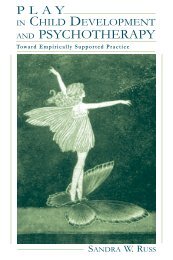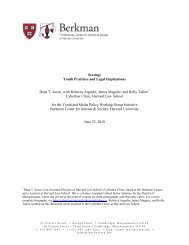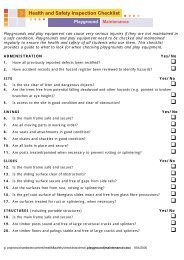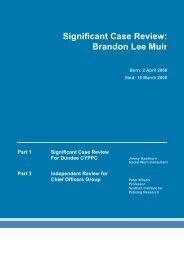Download PDF - Fair Play For Children
Download PDF - Fair Play For Children
Download PDF - Fair Play For Children
Create successful ePaper yourself
Turn your PDF publications into a flip-book with our unique Google optimized e-Paper software.
Case Study – The Methleys Home Zone<br />
In 1999, the Government recognised the value of designating residential areas as different<br />
from normal roads, and chose the Methleys as one of nine national pilot Home Zone<br />
schemes. Home Zones are residential areas which have been designed to encourage very low<br />
vehicle speeds. The aim is to reduce the dominance of motor vehicles and, in doing so, create<br />
environments more suited to the needs of pedestrians and cyclists (including children).<br />
Methleys Neighbourhood Action (MNA) is the residents group which came together to make<br />
the Home Zone a reality. MNA member Paul Doney said:<br />
“It has been a very successful partnership with the Highways Department, with both sides learning<br />
from each other. We could not have achieved what we have today without their support, but<br />
equally they could not have done a scheme like this without a co-operative community.”<br />
Cross professional training for people who design and manage public space<br />
5.18<br />
It is critically important that we raise awareness of the implications of children’s need for<br />
unstructured play on the design of local public spaces among those who are responsible for<br />
planning and design decisions. The traditional children’s workforce also needs to understand<br />
the importance of unstructured play for children<br />
5.19 We will negotiate, develop, pilot and roll out a programme of training that will bring<br />
together professionals who design public space with children’s delivery partners, including the<br />
play sector. We will offer this programme to every local authority and will pilot it with the<br />
pathfinders in 2008-09. The involvement of expert organisations will ensure a strong emphasis<br />
on creating natural play environments and the training will also explore how to involve children,<br />
families and communities in planning, designing and managing public space. It will<br />
complement DH’s plans for training planners, trailed in Healthy Weight, Healthy Lives, as part of<br />
wider efforts to focus attention on the importance of using the built environment to encourage<br />
physical activity.<br />
5.20 During the <strong>Play</strong> Strategy consultation we will work across government and with<br />
Government Offices, CABE, <strong>Play</strong> England and other organisations to communicate with<br />
relevant professional audiences.<br />
<strong>Play</strong> a focus of flagship developments<br />
5.21 The Town and Country Planning Association32 will publish a worksheet on sustainable<br />
communities as part of their work on the development of eco-towns. This will highlight the<br />
importance of creating open spaces for children to play, making them accessible and safe, and<br />
ensuring they can be enjoyed by all children, including those with disabilities.<br />
5.22 Healthy Weight, Healthy Lives includes a commitment to work with a number of interested local<br />
authorities to sign up to a £30m healthy community challenge fund. The fund will test and<br />
validate holistic approaches to promoting physical activity and could include increased<br />
32 TCPA website – www.tcpa.org.uk<br />
<strong>Fair</strong> <strong>Play</strong>: A consultation on the play strategy<br />
47





![The Childcare Act 2006 - Notes [Website] - Fair Play For Children](https://img.yumpu.com/50144819/1/184x260/the-childcare-act-2006-notes-website-fair-play-for-children.jpg?quality=85)




![Bouncy Castles [PDF] - Fair Play For Children](https://img.yumpu.com/45463572/1/184x260/bouncy-castles-pdf-fair-play-for-children.jpg?quality=85)






